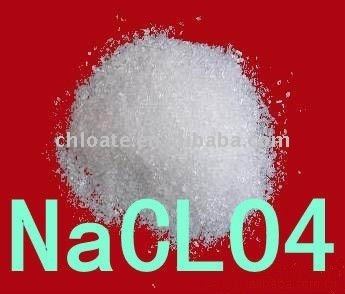Related compounds Molar mass 122.44 g/mol Melting point 130 °C | Formula NaClO4 Density 2.5 g/cm³ Appearance White crystalline solid | |
 | ||
Sodium perchlorate
Sodium perchlorate is the inorganic compound with the chemical formula NaClO4. It is the most soluble of the common perchlorate salts. It is a white crystalline, hygroscopic solid that is highly soluble in water and in alcohol. It usually comes as the monohydrate, which has a rhombic crystal system.
Contents
Its heat of formation is −382.75 kJ mol−1.
Uses
Sodium perchlorate is the precursor to many other perchlorate salts, often taking advantage of their low solubility relative to NaClO4 (209 g/100 mL at 25 °C). Perchloric acid is made by treating NaClO4 with HCl.
NaClO4 finds only minimal use in pyrotechnics because it is hygroscopic; ammonium and potassium perchlorates are preferred. These salts are prepared by double decomposition from a solution of sodium perchlorate and potassium or ammonium chlorides.
Laboratory applications
NaClO4 has a variety of uses in the laboratory, often as an unreactive electrolyte. For example, it is used in standard DNA extraction and hybridization reactions in molecular biology.
In medicine
Sodium perchlorate can be used to block iodine uptake before administration of iodinated contrast agents in patients with subclinical hyperthyroidism (suppressed TSH).
Production
Sodium perchlorate is produced by anodic oxidation of sodium chlorate at an inert electrode, such as platinum.
ClO3−(aq) + H2O(l) → ClO4−(aq) + H2(g)